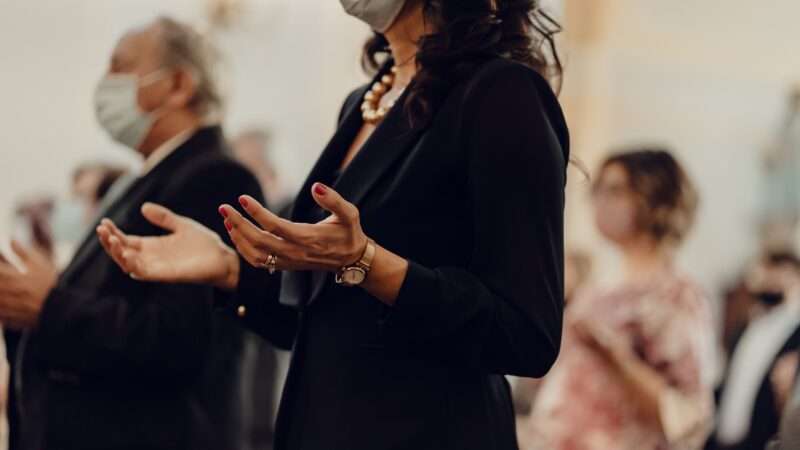Today, the New York Times published a lengthy profile of New York Governor Andrew Cuomo. One passage offers an unvarnished view of Cuomo’s animus towards Orthodox Jews.
[Cuomo] could also bridle at the indignity of voter courtship, growing especially irritated about an event celebrating Sukkot, the Jewish harvest holiday when the faithful gather outdoors beneath temporary shelters of branches and greenery. “These people and their fucking tree houses,” Cuomo vented to his team, according to a person who witnessed it and another who was briefed on his comments at the time. (The spokesman denied both incidents, adding: “His two sisters married Jewish men, and he has the highest respect for Jewish traditions.”)
I have five general reactions to this passage. First, I am generally skeptical of anonymous press accounts of Republican politicians. But I take far more seriously negative coverage of Democrats in an institution like the Times. The editors would not slip up on a quote like this. Moreover, the federal courts routinely cited anonymous press accounts about President Trump. Remember the “shithole countries” comment? Under TrumpLaw (which may have expired on January 20), this statement would be fair game to understand Cuomo’s animus. At least for purposes of this post, I will assume the comment is accurate.
Second, a brief background of the holiday. Sukkot, also known as the Feast of Tabernacles, is celebrated every fall to honor the harvest. During this week-long holiday, Jews eat all of their meals in a tent-like structure, known as a Sukkah. Often, branches are placed over the roofs of these structures. Hence, the “fucking tree houses” comment. Here, Cuomo is mocking and ridiculing one of the most lovely traditions the Jewish people have.
Third, when Cuomo says “these people,” he was almost certainly referring to Orthodox Jews. Orthodox Jews will eat all of their meals in the Sukkah for the entire week. They build Sukkahs in their backyards. In Brooklyn, where space is sparce, Sukkahs are built on balconies. One must be able to see the stars in the Sukkah, so there needs to be a clear line of sight to the sky. In the fall, it can get quite cold in New York. But people persevere. In my experiences, non-Orthodox Jews may build a sukkah near the temple for ceremonial purposes, but they do not actually eat a meal outdoors–especially in the cold. (That was the experience in my reform temple growing up. Correct me if I’m wrong.) I suspect Cuomo was invited to eat in an Orthodox Sukkah in the cold weather, and objected.
Fourth, let’s just switch the facts for a moment. What would happen if Cuomo referred to a group of African Americans as “these people,” and objected to their ceremony in a “fucking tree house.” Does anyone think he would still be in office?
Fifth, the spokesman’s response is all too typical. “His two sisters married Jewish men, and he has the highest respect for Jewish traditions.” This is the anti-Semitic form of “I have lots of Black friends!” This comment proves nothing. One can have a sister who marries a Jew and still have hostility towards Jews. Moreover, both of Cuomo’s sisters married non-Orthodox men, who likely do not eat in “fucking tree houses.”
The Jewish people are not monolithic. As the old saying goes, “Two Jews, Three Opinions.” Today, the divide between Orthodox and non-Orthodox Jews is quite large. I do not think Cuomo has animus towards non-Orthodox Jews. This group votes reliably Democratic, and shares the general values of secular society. Rather, I think Cuomo has animus towards Orthodox Jews. This group votes reliably conservative, and has habits and rituals that clash with secular orthodoxies. Most recently, they were unable to attend worship services on Zoom. Cuomo has long viewed Orthodox Jews in a transactional fashion: a simple voting block that can be negotiated with, the same way as a Union bargaining unit. But now we know what he really thinks about “these people” in “fucking tree houses.”
Cuomo’s “fucking tree people” comment sheds more light on his infamous October 8 press conference. The Second Circuit helpfully summarized his remarks.
Before issuing the Order, the Governor made public statements indicating that the restrictions were motivated in part by concerns about religious gatherings. For example, he noted that the source of the first coronavirus hot spot in New York “was an Orthodox Jewish man who went to a temple” and observed that “Orthodox Jewish gatherings often are very, very large and we’ve seen what one person can do in a group.” The Governor then said that he would be meeting with members of the “ultra-Orthodox [Jewish] community,” and if they would “not agree to enforce the rules, then we’ll close the institutions down.” One day later, he issued the Order. Three days after issuing the Order, the Governor explained that it addresses “a predominantly ultra-orthodox cluster.” Five days later, he said the State was “having issues in the Orthodox Jewish community in New York, where because of their religious practices, . . . we’re seeing a spread.” He said that state-level enforcement was necessary because the “ultra-Orthodox communities . . . are also very politically powerful.
During the Governor’s presentation, he included a slide of “super spreader” events. He included a photograph of Jews wearing black hats in a mass gathering. Cuomo said the photos were “from the past couple weeks.”

But the photos used were not recent. Not even close. One of the photos was from the 2006 funeral of Hassidic rabbi Moshe Teitelbaum. And the photo wasn’t even from New York City. It was taken in the Orange County village of Kiryas Joel, the location of a famous Supreme Court case concerning the Free Exercise Clause. The Governor’s staff simply found a clip art of Jews congregating. The Governor’s spokesperson blamed a “staff error.”
Regrettably, Governor Cuomo played on old, deeply rooted, and painful anti-Semitic tropes: that Jews spread diseases. Throughout the ages, Jewish communities were scapegoated as super-spreaders of “Jewish” diseases, such as the bubonic plague, tuberculosis, and typhus. This stereotype had led to a rash of anti-semitic attacks during a 2019 measles outbreak in New York. Cuomo could also be understood as suggesting that Jews are controlled by their rabbis, and that Jews are outsiders that should be blamed for societal problems. These tropes are pernicious, and harken back to painful times for the Jewish people.
On October 8, I wrote a post titled “Understanding Governor Cuomo’s Hostility Towards Jews.” I explained that Cuomo’s press conference demonstrated hostility towards Orthodox Jewish people. My post was well received in the Orthodox community. I received many emails from people I did not know, who said I articulated how the Orthodox community viewed the then-unstoppable Governor. The reaction from non-Orthodox Jews was very different. They wrote that I did not understand anti-semitism, that Cuomo was a dear friend of the Jews, and that Orthodox Jewish people deserved to be singled out for their failure to abide by COVID protocols.
The “fucking tree house” comment should give my critics some pause. Cuomo is a friend of some Jews, but not all Jews. For what’s worth, the Anti-Defamation League awarded Cuomo the highest honor in June 2020. Yet, As of the close of business, neither ADL nor its President has said a word about Como’s remarks. I will have much more to say about ADL and anti-semitism in due course.

from Latest – Reason.com https://ift.tt/3uFl1Ts
via IFTTT



